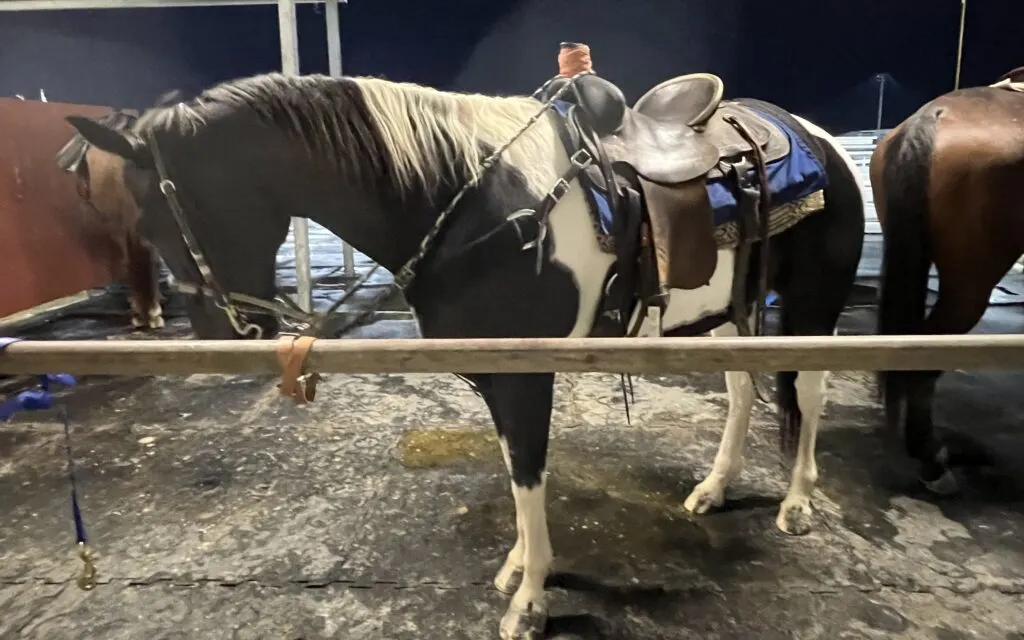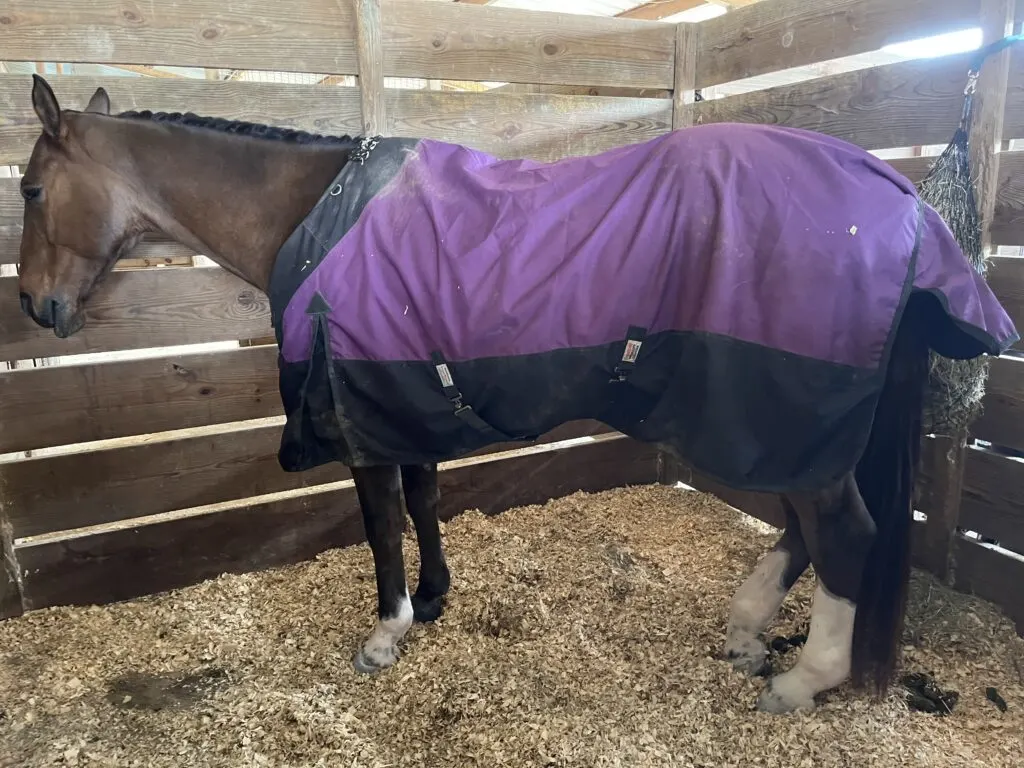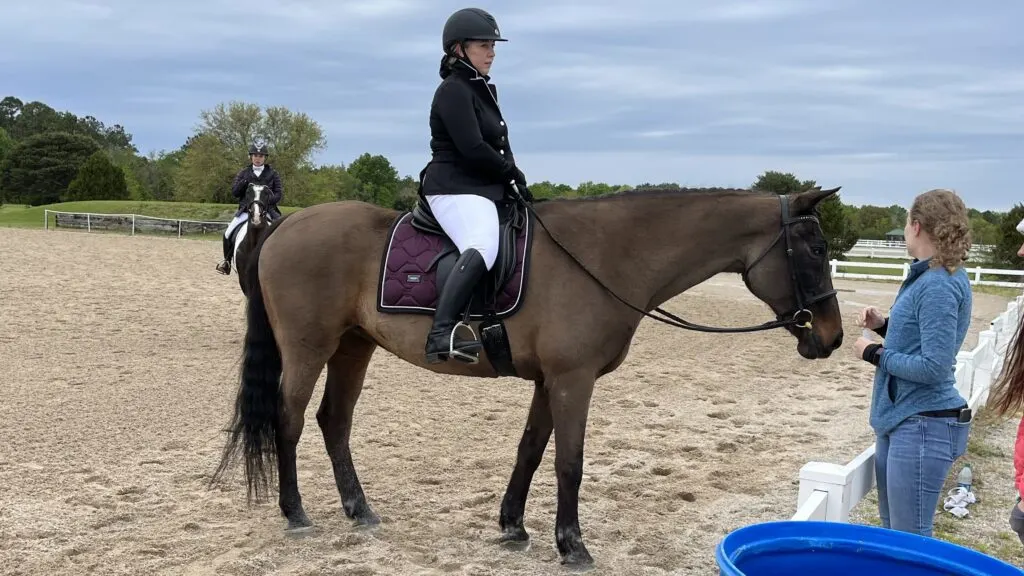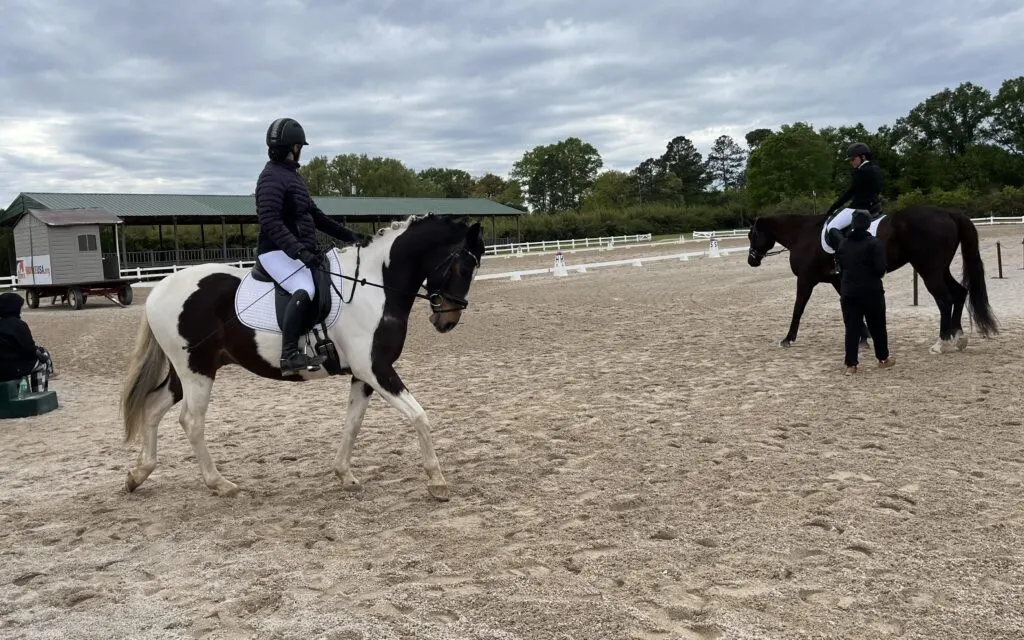Last updated: September 12, 2023
Not long ago, I was at a dressage show when my son, who’s more familiar with Western riding, turned to me and said, “I had no idea there were so many different types of riding horses.” That moment sparked my desire to share my knowledge about these animals with others.
Types of riding horses include those suited for Western, English, trail, and endurance riding. Popular breeds for Western riding are Quarter Horses and Paint Horses, while English riding features Thoroughbreds and Warmbloods. Trail and endurance riding often involve breeds like Arabians and Appaloosas. Each discipline has unique characteristics, and understanding them helps riders choose the perfect equine companion.
In this blog post, we’ll explore various riding disciplines, popular breeds, and essential factors to consider when finding your perfect equine companion. Join me on this exciting adventure as we discover the amazing world of riding horses together.
Why Knowing the Different Types of Riding Horses Matters
Let me tell you why it’s so important for us to learn about the different types of riding horses. You see, each type of horse is special in its own way, with unique abilities and strengths. By understanding these differences, we can match ourselves with the perfect horse for our riding adventures.
Plus, it helps us take better care of our equine friends by knowing their specific needs. In this comprehensive guide, I’m going to take you on a journey through the world of riding horses. We’ll explore the many types of horses out there, including the ones you might see at horse shows, races, or even on a farm.
Together, we’ll learn about their unique qualities, the history behind them, and the types of riding they’re best suited for. By the end of this guide, you’ll be a horse expert, ready to saddle up and ride off into the sunset. So, let’s get started and dive into the amazing world of riding horses.

Western Riding Horses
Yee-haw! Now, let’s talk about Western riding, which is a super cool style of horseback riding that started right here in the United States. You know, cowboys and cowgirls from the Wild West used to ride horses this way, herding cattle and traveling across the country.
Western riding has some unique features, like a bigger saddle with a horn in the front to hold onto. Plus, you’ll often see riders wearing cowboy hats and boots, which makes them look extra awesome.
Top Breeds for Western Horseback Riding Styles
When it comes to Western riding, there are two popular horse breeds that really stand out: Quarter Horses and Paint Horses. Quarter Horses are super fast and strong, which makes them great for working on a ranch or racing short distances.
They’re also really smart and easy to train, so they’re perfect for beginners! Paint Horses, on the other hand, are known for their stunning, colorful coats. They’re not only beautiful but also really versatile, which means they can do all sorts of Western riding activities!
Exciting Western Riding Events: Barrel Racing and Team Roping
There are lots of exciting events in the world of Western riding, but two of my favorites are barrel racing and team roping. Barrel racing is all about speed and agility, as riders race their horses around barrels in a cloverleaf pattern, trying to get the fastest time.
It’s really thrilling to watch and even more fun to try. Team roping, on the other hand, is all about teamwork between two riders and their horses. Together, they try to catch a steer by roping its head and legs as quickly as possible. It’s amazing to see how well the riders and horses work together in these events!

English Riding Horses
Now, let’s hop across the pond and explore English riding, which is a fancy and elegant style of horseback riding that started in Europe. In English riding, the riders wear classy outfits like tailored jackets, helmets, and tall boots.
The saddle is different, too – it’s smaller and lighter than a Western saddle, with no horn in the front. This style of riding is all about grace and precision, and it’s amazing to see how well the riders and horses move together.
Top Breeds for English Riding
When it comes to English riding, two popular horse breeds that really shine are Thoroughbreds and Warmbloods. Thoroughbreds are famous for their incredible speed and stamina, making them perfect for races like the Kentucky Derby.
But they’re also great for other English riding events because they’re so agile and responsive. Warmbloods, on the other hand, are known for their calm and gentle nature. They come in various types, like Dutch Warmbloods and Hanoverians, and they’re super talented at many English riding disciplines.

Exciting English Riding Events
There are lots of thrilling events in the world of English riding, but three of my favorites are dressage, show jumping, and cross country. Dressage is like ballet on horseback, where riders guide their horses through a series of precise movements and patterns.
It’s really beautiful to watch and takes a lot of skill and practice to master. Show jumping, on the other hand, is all about soaring through the air. In this event, riders and their horses race against the clock, jumping over tall fences and obstacles. It’s super exciting and always keeps me on the edge of my seat.
Cross country is an exciting English riding event that involves riders and their horses galloping across a large field and jumping over various obstacles such as logs, water jumps, and ditches. It tests the endurance, bravery, and athleticism of both the horse and rider, making it a thrilling and adrenaline-fueled sport to watch and participate in.
Other Riding Styles
Besides Western and English riding, there are other super fun forms of horseback riding we can try, like trail riding and endurance riding. Trail riding is all about pleasure, meandering through forests, mountains, or beaches, and just enjoying the great outdoors with your trusty steed.
Endurance riding, on the other hand, is a true test of stamina for both riders and horses. In these events, they cover long distances—sometimes up to 100 miles a day—over varied terrain, racing to see who can finish the fastest.
Top Breeds for Trail and Endurance Riding
When it comes to trail and endurance riding, two popular horse breeds that excel in these disciplines are Arabians and Appaloosas. Arabians are known for their incredible endurance, strength, and ability to adapt to different environments.
They have lots of energy and can keep going for miles and miles without getting tired. No wonder they’re often called the “marathon runners” of the horse world. Appaloosas, on the other hand, are recognized by their unique spotted coats and are super versatile.
They’re calm and sure-footed, making them perfect for trail riding and exploring new places. These breeds are great choices if you want to try something a bit different from Western or English riding.

Factors to Consider When Choosing a Riding Horse
When embarking on the exciting journey of choosing a riding horse, it’s essential to consider various factors that can impact your riding experience and the connection you’ll have with your equine companion.
In this section, we’ll dive into some key aspects to think about, such as the rider’s age and experience, the desired riding discipline, and the physical characteristics of the horse. By carefully weighing these factors, you’ll be well-equipped to find the perfect horse for your riding adventures.
Think About Riders Age and Experience Level
Choosing the perfect horse to ride can be a bit tricky, but don’t worry; I’m here to help. One important thing to think about is the age and experience level of the rider. If you’re a beginner or a younger rider, you’ll want a horse that’s gentle, patient, and easy to handle.
More experienced riders might look for horses with specific skills or abilities, depending on their interests and goals. Some might be interested in particular classes of horses, such as gaited horses or sport horses, which offer unique characteristics tailored to specific riding disciplines.
Remember, it’s essential to find a horse that’s a good match for the rider so that both can learn and grow together. By considering the rider’s experience and preferences, as well as the horse’s class and capabilities, you’ll be on the right path to finding the perfect equine partner.
Decide on Your Riding Discipline
Another factor to consider when choosing a riding horse is what type of riding you want to do, or in other words, your preferred horseback riding style. Are you more into Western riding, with its cowboy charm, or do you prefer the elegance of English riding?
Maybe you want to try trail riding or endurance riding for a change of pace. Knowing your preferred riding discipline and style will help you narrow down your horse choices, as some breeds are better suited for certain styles of riding than others.
Consider the Horse’s Physical Characteristics
Lastly, don’t forget to think about the physical characteristics of the horse you’re interested in. Horses come in all shapes and sizes, with different strengths and abilities. For example, if you’re a taller rider, you might want a larger horse that can comfortably carry your weight.
Or, if you’re planning on competing in a specific event, you may want a horse with the right build and athleticism for that sport. Just remember, the most important thing is to find a horse that you can connect with and enjoy riding, no matter what breed or size they may be.

The Joy and Benefits of Riding Horses
You might be wondering, “Why should I even try riding horses?” Well, let me tell you, there are so many incredible reasons to give horseback riding a go! For starters, it’s super fun and exciting.
Can you imagine the thrill of galloping through a field, wind in your hair, feeling the powerful muscles of your horse beneath you? It’s an amazing experience that you just have to try for yourself.
But the joy of horseback riding isn’t the only reason to hop in the saddle. Riding horses also comes with a bunch of awesome benefits for your body and mind. For one, it’s a great way to stay active and fit.
You might not realize it, but riding a horse actually works out a whole bunch of muscles, like your legs, core, and even your arms. Plus, it improves your balance, coordination, and flexibility too!
And let’s not forget the mental benefits. Spending time with horses is a fantastic way to relax and unwind, as they have a calming effect on people. They’re also great listeners, so you can share all your thoughts and feelings with your equine buddy without any judgment.
Horseback riding can even help boost your confidence and self-esteem as you learn new skills and form a strong bond with your horse. So, if you’re thinking about trying horseback riding, I encourage you to go for it.
Conclusion
Wow, we’ve covered a lot of ground in our journey through the world of riding horses. Just to remind you, understanding the different types of riding horses is super important because it helps us find the perfect horse for our adventures, match our riding style, and take better care of our equine friends.
We explored Western and English riding styles, as well as trail and endurance riding, and we discovered popular breeds for each discipline. My best advice is to always remember that finding the right horse takes time, patience, and a bit of trial and error.
So, don’t be afraid to try out different breeds and riding styles to see what suits you best. Most importantly, have fun and enjoy the incredible bond you can create with these amazing animals. Happy riding, and may you find your perfect horse companion.
FAQs
How do I determine which riding discipline is best for me?
Try taking introductory lessons in various horseback riding styles and disciplines to find the one that suits your preferences, physical abilities, and personal goals.
How do I know if a horse breed is suitable for my preferred riding style?
Research breeds known for excelling in your desired types of horse riding and consult with experienced riders, trainers, or breeders for personalized recommendations.
What is Gymkhana
Gymkhana is a fast-paced, competitive equestrian event that features timed games and races. Riders of all ages and skill levels participate, showcasing their horse’s speed, agility, and precision. Popular gymkhana events include barrel racing, pole bending, and keyhole races, all designed to challenge both horse and rider.
